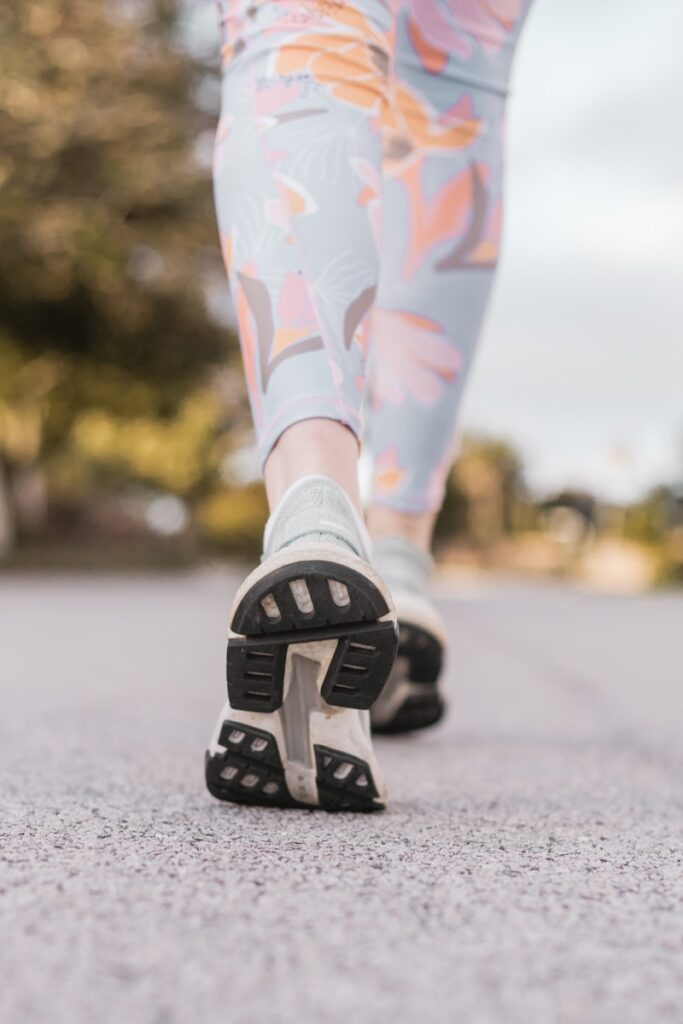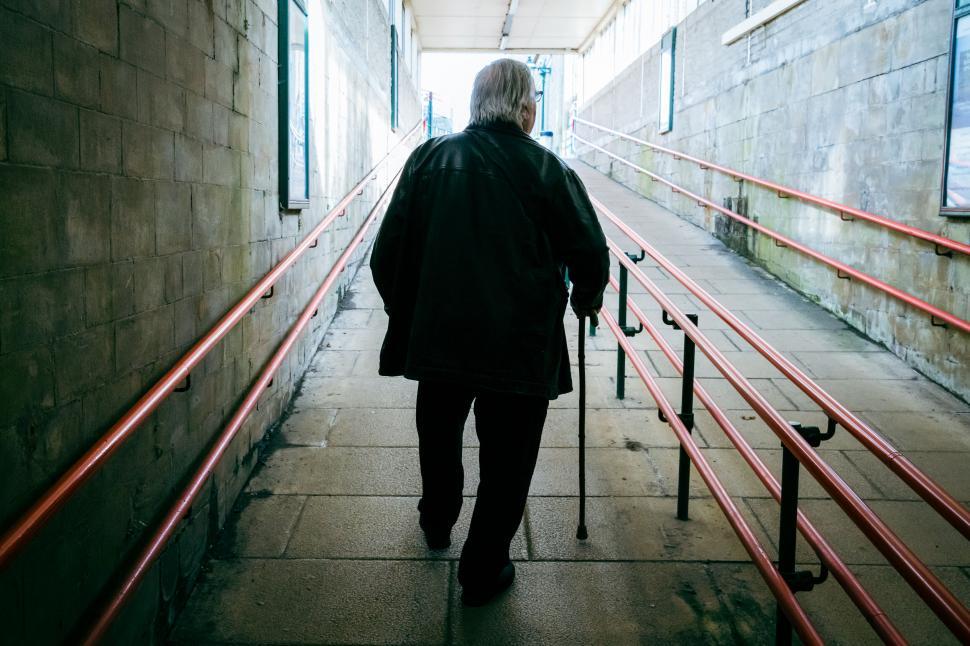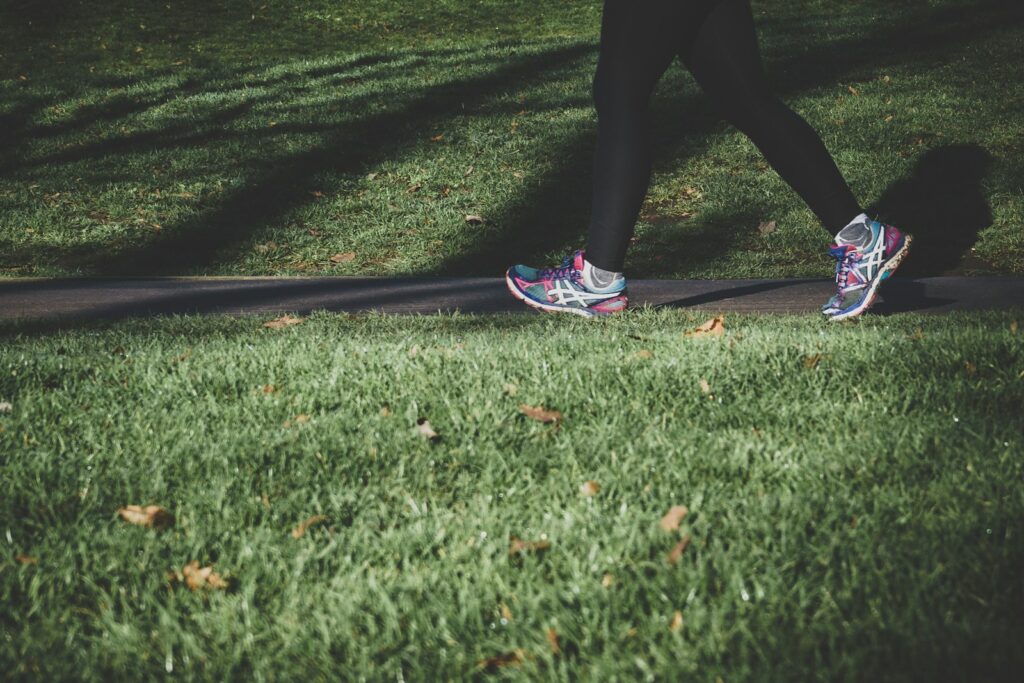
In an era saturated with complex fitness trends and high-intensity workout regimens, it’s easy to overlook the profound power of one of humanity’s most fundamental activities: walking. Far from being a mere means of getting from one place to another, walking has been scientifically proven as a cornerstone of overall well-being, offering a wide array of physical and mental health benefits without the need for specialized equipment or expensive gym memberships. It’s a testament to its simplicity and effectiveness that, despite its humble nature, walking remains one of the simplest, safest, and most effective activities for health.
The benefits of incorporating a regular walking routine into your life extend far beyond just maintaining or losing weight. This accessible exercise can dramatically boost your mood, inspire creative thinking, and even play a crucial role in extending your lifespan. From fortifying your heart to sharpening your mind and strengthening your immune system, the impact of daily steps is measurable and significant, making it an indispensable tool in your quest for a healthier, more vibrant life.
This comprehensive guide will delve into the science-backed advantages of walking, revealing how a consistent habit of putting one foot in front of the other can revolutionize your health. We will explore twelve key benefits, supported by direct evidence and authoritative sources, providing you with actionable insights and the latest health guidelines to help you unlock the full potential of this ultimate exercise. Let’s embark on this journey to discover why walking truly is your health’s best friend.
1. **Walking Can Extend Your Lifespan**The prospect of living a longer, healthier life is a goal many aspire to, and remarkably, the path to achieving it may be as simple as taking a walk. Scientific evidence increasingly points to consistent walking as a powerful intervention against early mortality. It’s not about logging marathon distances; even a modest commitment to walking can yield measurable, lasting benefits that contribute significantly to your longevity.
A 2025 review in The Times highlighted compelling data, indicating that “walking briskly for just 15 minutes daily reduces risk of early death by 20%.” This finding underscores the significant impact even short bursts of activity can have. Further reinforcing this, a substantial 2021 study published in JAMA, and cited by Real Simple, discovered that “walking 7,000 steps a day is linked to a 45% lower risk of all-cause mortality.” These statistics are not merely impressive; they represent a tangible reduction in the risk of premature death.
The connection between walking and an extended lifespan lies in its ability to regulate vital bodily functions. Consistent physical activity like walking helps maintain healthy blood pressure levels, stabilizes blood sugar, and supports a healthy weight. All these factors are directly correlated with how long and how well you live, working in concert to create a robust physiological environment less susceptible to chronic diseases. Moreover, the research suggests an incremental benefit: “Every extra 1,000 daily steps further lowers death risk by up to 10% (up to about 7,500 steps),” as noted by Self.com in 2025. This means that even small increases in your daily step count can continuously contribute to your life expectancy, offering an accessible strategy for a longer, more vibrant existence at any age.
Read more about: Consumer Alert: Unmasking the 13 Car Dealership Scams That Cost Buyers Thousands

2. **Walking Improves Heart Health**When it comes to safeguarding your cardiovascular system, walking stands out as a remarkably effective and accessible form of “medicine.” Regular physical activity, particularly walking, is profoundly associated with an improvement in various cardiovascular risk factors, making it a cornerstone strategy for maintaining a healthy heart and preventing serious conditions like heart disease and stroke. The simplicity of walking belies its potent ability to protect one of your body’s most crucial organs.
The American Heart Association unequivocally states that “just 30 minutes of brisk walking daily lowers risk of heart disease and stroke by up to 40%.” This remarkable reduction highlights walking’s significant protective effect. Beyond general risk reduction, regular walking has specific physiological benefits that directly impact heart health. It effectively “reduces both systolic and diastolic blood pressure,” crucial for preventing hypertension, and simultaneously “lowers ‘bad’ LDL cholesterol, and raises ‘good’ HDL cholesterol,” optimizing your lipid profile for better cardiovascular function.
Furthermore, a 2025 Mayo Clinic report provides deeper insight into walking’s mechanical benefits, demonstrating that it “improves blood vessel flexibility and reduces arterial stiffness.” This is vital because flexible, healthy blood vessels are less prone to plaque buildup and better equipped to handle blood flow, thereby “protecting against heart attack and stroke.” The consistency of your walking routine is paramount; making it a regular habit ensures these cardiovascular improvements are sustained, transforming each step into an investment in a stronger, more resilient heart. The more you increase the duration or distance you walk per day, the greater the reduction in risk you may experience.
Read more about: 13 Smart DIY Car Upgrades That Can Skyrocket Your Trade-In Value by Thousands

3. **Walking Supports Weight Management**For individuals striving to achieve or maintain a healthy weight, walking offers a highly effective and sustainable approach. It’s a foundational exercise that integrates seamlessly into daily life, providing significant caloric expenditure and metabolic benefits that support lasting weight control. Unlike more strenuous activities, walking is gentle on the body, making it an ideal choice for a broad spectrum of fitness levels and ages.
One of the most direct ways walking aids in weight management is by burning calories. A 30-minute brisk walk, for instance, can “burn 150–200 calories (for a 70kg adult),” according to the CDC in 2025. This consistent calorie expenditure, when combined with a balanced diet, creates the necessary deficit for weight loss or helps in preventing weight gain. The beauty of walking is that you can adjust its intensity and duration to increase calorie burn, whether by walking faster, covering more distance, or tackling varied terrain like hills.
Beyond direct calorie burning, walking exerts a deeper influence on your body’s metabolic processes related to weight. Harvard researchers made a fascinating discovery, finding that walking can actually “turn off” weight-promoting genes by “up to 50%,” as reported by Harvard Health in 2023. This suggests a genetic component to walking’s effectiveness in weight control. Moreover, the timing of your walks can be particularly impactful; Mayo Clinic research from 2025 indicates that “people who walk after meals have lower blood sugar spikes and are less likely to gain weight over time.” This post-meal activity helps manage blood sugar levels, preventing the body from storing excess glucose as fat, thereby solidifying walking’s role as a cornerstone for effective and sustainable weight management.
Read more about: Unlock a Healthier Future: 13 Science-Backed Lifestyle Changes to Significantly Lower Your Cancer Risk

4. **Walking Lowers Blood Sugar and Diabetes Risk**The global prevalence of type 2 diabetes makes effective blood sugar management a critical health concern. Walking emerges as a potent, non-pharmacological intervention that can significantly lower blood sugar levels and, over time, substantially reduce the risk of developing this chronic condition. Its accessibility and simplicity mean that virtually anyone can harness its benefits to improve metabolic health.
One of the most immediate impacts of walking on blood sugar is its effect after meals. Clinical trials have clearly demonstrated that “a 10-minute walk after eating significantly reduces blood sugar and insulin spikes,” a finding highlighted by the Times of India in 2024. This postprandial activity helps the body utilize glucose more efficiently, preventing the sharp rises that can lead to insulin resistance over time. Considering how often we sit after meals, incorporating a short walk is a practical and highly effective strategy to manage glycemic responses.
Beyond immediate post-meal effects, consistent walking offers long-term protection against type 2 diabetes. Research shows that “regular walkers have up to 30% lower risk of type 2 diabetes compared to inactive people,” as reported by Runner’s World in 2024. This significant reduction underscores walking’s role in improving insulin sensitivity and overall glucose regulation. By engaging muscles and increasing oxygen flow, walking helps cells better absorb glucose from the bloodstream, thus reducing the burden on the pancreas and mitigating the risk factors associated with diabetes. It’s a proven, drug-free way to maintain healthy blood sugar levels and safeguard against one of the most widespread chronic diseases.
Read more about: 12 Hidden Health Habits Backed by Science That Could Extend Your Life by a Decade

5. **Walking Strengthens Joints, Muscles & Bones**Maintaining strong, healthy joints, muscles, and bones is crucial for mobility, preventing injury, and preserving an active lifestyle, particularly as we age. Walking, often perceived as a low-impact activity, actually provides remarkable benefits for the musculoskeletal system, contributing to its strength, lubrication, and overall resilience. It’s a weight-bearing exercise that offers protection and fortification from the ground up.
For your joints, walking acts as a natural lubricant. The Arthritis Foundation highlights that walking “lubricates joints, improves cartilage nutrition, and reduces arthritis pain.” The gentle compression and release motion of walking helps circulate synovial fluid, which nourishes cartilage and keeps joints moving smoothly. This makes walking an excellent activity even for individuals with conditions like arthritis, as it can alleviate pain and stiffness without putting excessive stress on vulnerable areas.
Furthermore, walking plays a vital role in building and maintaining bone density, a key factor in preventing osteoporosis. Mayo Clinic research confirms that walking “maintains bone density and prevents osteoporosis,” simultaneously “improving balance and lowering fall risk.” The impact of your feet hitting the ground sends signals through your bones, stimulating bone-forming cells and making your skeletal structure stronger. For muscle strength, walking engages and tones the muscles in your legs, especially when you incorporate variations like walking in hilly areas, on an incline treadmill, or climbing stairs. This strengthening of the surrounding musculature provides crucial support and protection for your joints, stabilizing them and helping to prevent further damage, ensuring you remain mobile and pain-free.
Read more about: Your Guide to the Power of Deload Weeks for Muscle Growth

6. **Walking Boosts Mood and Lowers Stress**In our fast-paced world, managing mental health and stress is as important as physical fitness. Fortunately, walking offers a simple yet profoundly effective way to enhance your mood, reduce anxiety, and significantly lower stress levels. The therapeutic effects of stepping out, especially into natural environments, can provide an immediate uplift and contribute to long-term psychological well-being.
The positive impact of walking on mental health is well-documented. Multiple randomized trials, as referenced by Runner’s World in 2025, confirm that “walking outdoors increases serotonin, dopamine, and endorphins.” These neurotransmitters are often referred to as “feel-good” chemicals, playing a crucial role in regulating mood and promoting feelings of happiness and contentment. A mere “10–20 minute walk can significantly reduce anxiety and tension,” as Marie Claire UK reported in 2024, offering a quick and accessible antidote to daily stressors.
Beyond these neurochemical changes, walking provides a unique opportunity for mental detachment and cognitive recalibration. It offers a break from sedentary activities and screens, allowing the mind to relax and encouraging a free flow of ideas, which can be particularly inspiring for creative thinking. Studies in Psychosomatic Medicine even suggest that “walking’s mental health impact can match that of more intense exercise,” highlighting its potent stress-reducing capabilities.
Moreover, the consistent practice of walking can gradually impact your body’s stress response. Over time, it can “decrease levels of cortisol (a stress hormone),” contributing to a more balanced and resilient emotional state. To fully experience these profound benefits, aiming for 30 minutes of brisk walking or other moderate-intensity exercise 3 days a week, or even breaking it up into three 10-minute walks, can make a significant difference in your daily mood and overall mental health.
Read more about: Embrace Spring: Why Starting a Home Garden Will Transform Your Life, Health, and Family Connections

7. **Walking Sharpens Brain Function & Reduces Dementia Risk**Beyond its immediate physical advantages, walking offers profound benefits for your brain, acting as a natural cognitive enhancer. Regular aerobic walking is a powerful way to keep your mind agile and reduce the risk of neurodegenerative diseases, making it an invaluable tool for long-term brain health. It helps ensure that your brain receives the oxygen and nutrients it needs to perform optimally.
One of the primary mechanisms by which walking benefits the brain is by increasing blood flow and oxygen to this vital organ. This enhanced circulation actively boosts neuroplasticity, which is the brain’s ability to reorganize itself by forming new neural connections throughout life, as noted by Wikipedia in 2025. Improved blood flow also helps remove waste products and ensures brain cells are well-nourished, which is crucial for maintaining cognitive sharpness.
The protective effects of walking against cognitive decline are substantial and well-supported by research. A study highlighted by EatingWell in 2024 revealed that regular walkers had a significant 38% lower risk of dementia, alongside demonstrating better memory and attention scores. These findings underscore walking’s role in not only preserving cognitive function but also in potentially preventing conditions like Alzheimer’s, allowing individuals to maintain their mental independence for longer. Consistent walking, therefore, is a simple yet powerful strategy for a healthier, more resilient brain.
Read more about: Unlock Your Brain’s Full Potential: 14 Science-Backed Habits to Outsmart ‘Brain Rot’ and Boost Your Cognitive Power
8. **Walking Strengthens Immunity & Reduces Inflammation**In an age where maintaining a robust immune system is more critical than ever, walking emerges as a powerful, accessible defense. Regular physical activity, particularly moderate-intensity walking, plays a crucial role in strengthening your body’s natural defenses and reducing chronic inflammation, which is linked to a host of long-term health issues. It’s an effortless way to help your body fight off illness and recover more efficiently.
Walking has a direct impact on the number and activity of your immune cells. Studies indicate that regular walking increases the presence of immune cells such as natural killer (NK) cells, which are frontline defenders against infection and even cancerous cells, according to Wikipedia in 2025. This means that a consistent walking habit can make you less susceptible to common colds, the flu, and other illnesses, reducing the frequency and severity of infections.
Furthermore, walking is highly effective at lowering inflammation markers, such as C-reactive protein (CRP), which are often associated with numerous chronic illnesses, as also reported by Wikipedia in 2025. Chronic inflammation can contribute to conditions like heart disease, diabetes, and certain cancers. By actively reducing these markers, walking helps create a healthier internal environment, enabling you to get sick less often and heal faster when you do fall ill. A 2018 study, synthesizing research from over a century, further confirmed that consistent exercise like walking improves overall immune regulation.
Read more about: The Science of Speed: Unveiling How Just 15 Minutes of Fast Walking Each Day Can Add Years to Your Life

9. **Walking Improves Sleep Quality**For many, a restful night’s sleep feels like an elusive dream, but integrating a consistent walking routine into your day can significantly improve your sleep quality. Walking acts as a natural sleep aid, helping you fall asleep faster, enjoy deeper rest, and wake up feeling more refreshed and revitalized. It’s a gentle yet potent solution for cultivating healthy sleep patterns.
One of the key ways walking enhances sleep is by regulating your body’s natural sleep-wake cycle, also known as your circadian rhythm. Health.com in 2025 highlighted that walking, particularly when done in daylight, helps to reinforce this internal clock. Exposure to natural light during a walk signals to your brain that it’s daytime, which in turn supports the natural release of melatonin later in the evening, promoting a more consistent and healthy sleep schedule.
Moreover, the physical exertion from walking, even at a moderate intensity, helps to reduce excess energy and promotes a sense of calm, making it easier to drift off to sleep. Real Simple in 2025 published findings that regular walkers experience better, deeper sleep, and are less prone to waking up during the night. The cumulative effect of physical activity and exposure to natural light establishes a virtuous cycle that consistently improves both the duration and restorative quality of your sleep, helping you maintain overall health.
Read more about: Unlock Your Brain’s Full Potential: 14 Essential Steps for Lifelong Cognitive Health

10. **Walking Increases Mobility and Independence in Seniors**As we age, maintaining mobility and independence becomes increasingly important for preserving quality of life. Walking, being a low-impact and accessible activity, offers profound benefits for seniors, actively countering age-related declines in physical function and ensuring a more active, self-sufficient lifestyle. It’s a simple investment that yields significant dividends in health and autonomy.
Even modest increases in walking speed can have a considerable impact on senior mobility. A July 2025 study in The Washington Post revealed that seniors who walked just 14 more steps per minute notably improved their mobility and independence. This finding suggests that even slight adjustments to walking pace can translate into meaningful improvements in daily function, making tasks easier and life more engaging. This increased mobility also contributes to improved balance and coordination, which are crucial for preventing falls.
Furthermore, incorporating specific walking techniques, such as interval walking, can amplify these benefits. The Washington Post study also highlighted that alternating between three minutes of fast walking and three minutes of slow walking further enhances heart and muscle health in seniors. This type of varied intensity provides a more comprehensive workout, strengthening the cardiovascular system and the muscles that support stability and movement. By embracing regular walks, seniors can protect their ability to move freely, engage with their communities, and uphold their cherished independence for years to come.
Read more about: Beyond the Lock: 14 Essential Home Safety Upgrades You’ll Be Grateful For

11. **Walking Curbs Cravings & Improves Eating Habits**Managing cravings and cultivating healthy eating habits can be a challenge, but walking offers a surprising yet effective strategy to gain control over your dietary choices. Far from being just a physical workout, walking provides a powerful psychological distraction and stress-reduction tool that can directly impact what and how much you eat. It’s an accessible way to support your nutritional goals without feeling deprived.
Remarkably, studies have shown that a brief walk can significantly diminish the intensity of cravings. A Harvard study, for instance, found that merely a 15-minute walk was enough to cut cravings for sugar and chocolate in half. This suggests that instead of reaching for a sweet treat when a craving strikes, a short walk can be an effective alternative, diverting your mind and potentially re-regulating your desire for unhealthy foods. This simple act can be a game-changer for those looking to reduce their intake of processed sugars and fats.
Beyond direct craving reduction, walking helps to improve eating habits by distracting from the stress and negative moods that often trigger overeating. When we feel anxious, bored, or stressed, many of us turn to food for comfort. Walking provides a healthier coping mechanism, shifting focus away from emotional eating. By reducing cortisol, the stress hormone, and boosting mood-enhancing neurotransmitters, walking creates a more balanced emotional state, giving you greater control over impulsive eating behaviors and fostering a more mindful approach to nutrition. It’s a proactive step towards healthier food choices.

12. **Walking Is Accessible, Sustainable & Easy to Start**Perhaps one of the most compelling aspects of walking as an exercise is its universal accessibility and inherent sustainability. Unlike many fitness trends that require specialized equipment, expensive memberships, or a high level of initial fitness, walking is a fundamental human movement available to almost everyone, regardless of age, fitness level, or economic status. This makes it the ultimate, inclusive exercise.
Official health guidelines consistently endorse walking as a primary form of physical activity for achieving significant health benefits. The CDC and AHA recommend aiming for 5,000–7,000 steps a day, or approximately 150 minutes of moderate-intensity activity per week. New research further emphasizes its broad appeal, indicating that even 4,000 steps a day can help older adults live longer, as reported by Self.com in 2025. This flexibility means you can start at your own pace and gradually increase your activity level, making it incredibly easy to integrate into any lifestyle.
From a practical standpoint, walking requires nothing more than a comfortable pair of shoes and a willingness to move. It can be done almost anywhere—in your neighborhood, a park, or even indoors if the weather isn’t cooperating. This ease of access ensures that a walking routine is not only easy to start but also easy to maintain long-term, fostering consistent engagement. It truly is the most practical and “doable” form of exercise, offering measurable health benefits that accumulate with every single step, proving that sometimes, the simplest solutions are the most profound.
### Expert Tips: Maximizing Your Walking Routine
Ready to elevate your walking game and unlock even more benefits? Incorporating a few simple strategies can significantly enhance your experience and results. These expert tips are designed to help you make the most out of every stride, transforming your daily walk into a powerful tool for wellness.
Tracking your progress is a fantastic motivator. Consider using a pedometer, a health app on your phone, or a smartwatch to monitor your steps, distance, and even pace, as suggested by Self.com in 2025. Seeing your achievements visually can provide immense encouragement and help you set new goals. Additionally, try integrating short walks after meals to optimize blood sugar control, a practical tip backed by research from the Times of India in 2024. This small change can make a big difference in metabolic health.
To boost cardiovascular fitness and muscle engagement, explore interval walking. As highlighted by The Washington Post in July 2025, alternating between a brisk pace for three minutes and an easy pace for three minutes can provide extra heart and muscle benefits. Don’t walk alone if you prefer company; seeking social support by walking with friends, family, or joining a local walking group can enhance accountability and enjoyment, according to Marie Claire in 2024. Finally, for mental stimulation and renewed motivation, make it a habit to explore new routes, discovering different neighborhoods, parks, or trails, as advised by Runner’s World in 2025. Variety keeps the routine fresh and exciting.
### Frequently Asked Questions About Walking
Many people have common questions when starting or optimizing a walking routine. Let’s address some of the most frequently asked queries to provide you with clear, actionable insights and ensure you’re confident in your walking journey.
A prevalent question is, “How much walking is ‘enough’?” For most healthy adults, significant health benefits are seen from aiming for 5,000–7,000 steps daily, or at least 150 minutes of moderate-intensity walking per week, according to Self.com in 2025. Remember, consistency is often more important than hitting a specific number every single day. Even breaking up your activity into shorter sessions throughout the day can accumulate substantial health benefits.
Another common query is, “Is outdoor walking better?” While both indoor and outdoor walking offer fantastic benefits, outdoor walks do provide additional advantages. They can include exposure to sunlight, which is vital for Vitamin D synthesis and mood regulation, as well as the mental stimulation and variety that natural environments offer, as noted by Marie Claire in 2024. However, if weather conditions are unfavorable, indoor options like treadmills or shopping malls are excellent alternatives.
Finally, many wonder, “What pace is considered brisk?” A brisk pace typically falls within the range of 100–130 steps per minute, where you can still talk but would find it challenging to sing, as suggested by Runner’s World in 2025. And yes, you absolutely can break up your walks! Multiple short sessions throughout the day, whether it’s three 10-minute walks or several five-minute strolls, are just as effective as one longer session in contributing to your overall health and well-being. Any amount of activity is beneficial, so find what works best for your schedule and preferences.
### Conclusion: Your Path to Lifelong Wellness, One Step at a Time
Walking truly stands as your most powerful, affordable, and scientifically approved tool for achieving total wellness. The evidence is clear and abundant: dozens of robust studies consistently show that making walking a regular habit brings measurable, lifelong benefits. From the profound ability to extend your lifespan and significantly lower the risk of chronic diseases to improving your sleep quality and keeping your mind razor-sharp, the advantages are undeniable.
It’s a journey that doesn’t demand dramatic changes or high-intensity feats. Instead, it invites you to start exactly where you are, at your own pace, and to gradually build momentum. Tracking your progress can provide immense motivation, turning each completed step into a small victory. The beauty of walking lies in its simplicity and accessibility, proving that sometimes the most effective path to a healthier, more vibrant life is the one you can simply walk.
Read more about: Unlock a Healthier Future: 13 Science-Backed Lifestyle Changes to Significantly Lower Your Cancer Risk
So, if you’re ready to feel better, live longer, and embrace a more energetic existence, set your walking goal today. Remember, every step you take is an investment in your future self, building a foundation of health and well-being one foot in front of the other. The journey to better health begins with that very first step; what are you waiting for?




